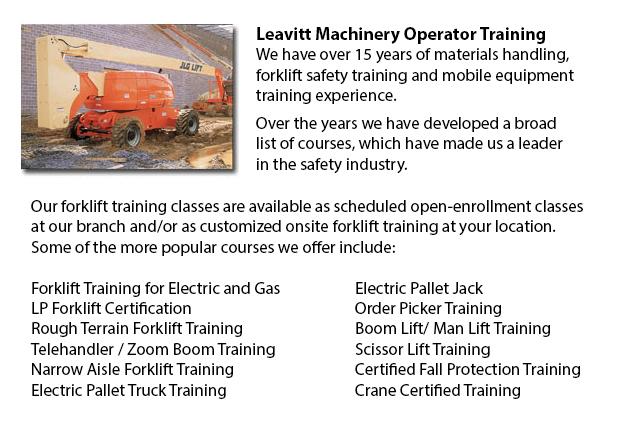
Boom Lift Certification Alberta - The use o elevated work platforms allow for maintenance operations and work to be carried out at elevated work heights which were otherwise not reachable. Boom Lift Certification Training educates workers regarding safely operating boom lifts and scissor lifts.
When work platforms are operated unsafely, they have the potential for serious injury and even death, regardless of their lift style, site conditions or application. Electrocution, falls, tip-overs and crushed body parts could be the terrible outcome of improper operating procedures.
In order to avoid aerial lift incidents, individuals should be qualified to train workers in the operation of the certain kind of aerial lift they will be utilizing. Controls should be easily accessible in or beside the platform of boom lifts used for carrying workers. Aerial lifts should not be be altered without the express permission of other recognized entity or the manufacturer. If you are leasing a lift, ensure that it is maintained correctly. Before using, safety devices and controls must be checked to be able to ensure they are correctly functioning.
It is vital to follow safe operating procedures to be able to avoid workplace incidents. Driving an aerial lift while the lift is extended should not be carried out, nevertheless, a few models are designed to be driven when the lift is extended. Always set brakes. Set outriggers, if available. Avoid slopes, but when required utilize wheel chocks on slopes that do not exceed the slope limitations of the manufacturer. Follow manufacturer's load and weight limitations. When standing on the boom lift's platform, make use of a safety belt with a two-foot lanyard tied to the basket or boom or a full-body harness. Fall protection is not needed for scissor lifts that have guardrails. Never sit or climb on guardrails.
This course features the following topics: training and certification; safety guidelines to be able to prevent a tip-over; slopes and surface conditions; checking the travel path & work area; other guidelines for maintaining stability; stability factors; weight capacity; leverage; testing control functions; pre-operational inspection; mounting a motor vehicle; safe operating practices; overhead obstacles and power lines; safe driving procedures; PPE and fall protection; use of lanyards and harness; and avoiding falls from platforms.
The trainee who is successful will learn the following: authorization and training procedures; pre-operational inspection procedures; how to avoid tip-overs; factors affecting the stability of boom and scissor lifts; how to use the testing control functions; how to use PPE and strategies in order to avoid falls.
-
Crane Training School Alberta
Crane Training School Alberta - The crane training school provides industry-relevant programs. Courses provide trainees with learning results which match current industry demands. Our small class sizes combine theory and hand-on experience. Our quali... More -
Aerial Lift / Boom Lift / Man Lift / Scissor Lift Training in Alberta
Scissor platform lifts are lift truck tables which lift up materials and people and supplies vertically. They are normally utilized in commercial, industrial and construction environments. A common use of scissor lifts is for lowering or lifting cons... More -
Forklift Certification Courses Alberta
Forklift Certification Courses Alberta - Forklift certification really helps to be able to ensure that businesses are following regulations and legislation. Forklift operators must go through certification prior to being permitted to run machinery. I... More -
Manlift Ticket Alberta
Manlift Ticket Alberta - The Elevated Platforms and Manlifts Certification program helps to provide the required training on the safe operating procedures, work practice, rules and regulations regarding the daily activities for the operators of this... More -
Crane Safety Training Alberta
Crane Safety Training Alberta - Both crane driver and their supervisors have to be aware of all the possible problems associated to the operation of an overhead crane. All over North America, there is legislation which provides rules for the safe ins... More -
Fall Protection Training in Alberta
There are high numbers of injuries at work connected to falling and a lot of fall-related deaths reported each year. Most of these instances might have been avoided with better training, better measures in place, and by correctly equipping staff befo... More -
Scissor Lift Ticket Alberta
Scissor Lift Ticket Alberta - Scissor hoists have significantly benefited construction operations in view of the fact that the work that used to need a lot of effort and lots of people, could now be done using the scissor lift and just one individual... More -
Overhead Crane Training Alberta
Overhead Crane Training Alberta - An overhead crane is a huge crane utilized to move and lift large, heavy things that can't be lifted by hand. An overhead crane is typically fixed in place when in use. These machinery are capable of moving huge volu... More

Forklift Training Alberta
TOLL FREE: 1-888-254-6157
forkliftcertificationalberta.com/
Email Us
About Us


